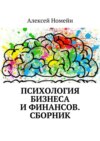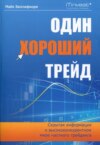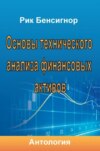Читать книгу: «Probabilistic Theory of Stock Exchanges», страница 3
This axiom points to the possibility of constructing sufficiently generalized and accurate models of the agents’ behavior in the market and, consequently, of the market as a whole on the basis of agents’ supply and demand. It leads us to the right path for determining and defining general properties of the market agents’ behavior, which, in turn, enables us to identify general regularities in the course of market processes. This gives us a reliable basis for building theoretical economic models at a fairly high scientific level, using formal physical and mathematical methods. We are convinced that only these types of general market phenomena and processes fairly represent the main interest of any sufficiently accurate scientific investigation using the methods of theoretical and experimental economics. In other words, this axiom forces us to focus on building the economic theory as a sufficiently rigorous science, based on the study of the behavior of individual agents (see the principle of methodological individualism [Mises, 2005] in terms of their S&D, i.e., behavior determined by their individual demand or supply.
To avoid misunderstandings, let us make the following note. Of course, there are many aspects of the economic agents’ behavior in markets, which are determined by specific nuances and peculiarities in the behavior of particular people and communities in different situations and in different markets, and which often cannot be described in terms of supply and demand. These nuances and peculiarities of specific economic agents in particular markets are important, of course, when studying the process of making specific market decisions in particular situations of planning their market intentions and strategies [Schiller, 2000], for example, when choosing their quotations in course of trading at an exchange, but they are not the subject of probabilistic economics in this study. Moreover, for a probabilistic economics, it is all these nuances and features that determine the supply and demand for each agent at any given time, and these S&D are the inputs to the probabilistic economics. But, again, neither these nuances and peculiarities, nor concepts such as expected utility and risk [Wickens, 2012], are the basic concepts or the subject of research in probabilistic economics. The same is true for the nuances and peculiarities of exchange markets: in probabilistic theory, there is no need to describe and explicitly account for them, unlike in traditional theories like efficient market theory [Fama, 1970]. After all, it is not all these specific nuances and peculiarities of decision-making processes of market agents, and not the properties of specific markets like perfect competition, etc., but the specific actions of market agents and their determining role in the operation, development and evolution of markets, and the economy as a whole, that constitute the main subject of research and the main content of economic theory, in our opinion. As we argued above, it is, of course, important to understand what market agents think, and why they make these particular decisions, and not others, but, nevertheless, this is the subject of research in other more applied disciplines of economic science.
1.5. PRINCIPLES OF PROBABILISTIC ECONOMICS
As we know, specific definitions of supply and demand as well as formulations of the S&D concept and methods of building S&D functions differ from each other in each economic theory, depending on its goals, objectives and possibilities. For example, the concept of supply and demand in mainstream neoclassical economics is based on the intentions or action plans of market agents. The intentions or plans of market agents are a trade secret, but it is completely impossible to build up a quantitative economic theory on the basis of the unobservable intentions or plans of real market agents. On the contrary, probabilistic economics is built on the basis of real actions of these agents in markets that can be observed and measured. More precisely, in a probabilistic economics, market S&D are derived or result from real agent S&D, i.e. from real agent market actions. In this fundamental point, by the way, probabilistic economics is close to the Austrian school of economics, especially in the interpretation of Ludwig von Mises [2005]. In other words, unlike, say, neoclassics, the probabilistic functions S&D are determined on the basis of the real actions of market agents in the market. And they are calculated with strict account of the following six principles of probabilistic economic theory.
1.5.1. SUPPLY AND DEMAND PRINCIPLE
Probabilistic economics is based on the most well-known concept of economic theory, namely the concept of S&D. In its most general form, this concept is formulated in probabilistic economics as follows: all the main things that happen in the market depend on some specific balance of supply and demand, determined on the basis of decisions made and openly presented in the form of market orders or market quotations to buy or sell a certain amount of an asset at a certain price. And only what is determined in the market by supply and demand, expressed in this form, is the subject of the study of probabilistic economics. In this sense it can also be called S&D economic theory, and the S&D principle itself is the main element of its basis.
1.5.2. AGENT PRINCIPLE
This is generally the most important concept, or paradigm, in respect of the markets. Here it is: every market consists of market agents, buyers and sellers, interacting quite intensively, and prone not only to competition, but also to mutually beneficial social cooperation. There are no other market forces in markets, except the forces of market agents’ interaction. All market results are a consequence of the market agents’ actions, even if their actions were strongly influenced by other factors: the state, institutions, etc. Everything that happens in markets is done by interacting market agents and therefore only agent-based models (agent action-based models or below simply action-based models) can provide a reasonable and reliable quantitative basis for any modern economic theory. And the actions of market agents in the market are exactly the issuing of bids or quotations to buy or sell, which was discussed above.
1.5.3. INSTITUTIONAL AND ENVIRONMENTAL PRINCIPLE
Markets are never completely closed or free. All market agents are constantly influenced not only by other agents, but also by numerous external forces and factors. These external forces and factors, playing the role of boundary conditions, give economic systems harmony, integrity and stability. The most important of these are, of course, institutions of various kinds, such as the state, trade unions, laws, innovations, etc. Just as important might be such forces and factors of the external environment as other markets and economies, including foreign ones, as well as natural and man-made processes, etc. The influences exerted by each of these forces and factors on the structure of market prices and on market behavior can be comparable to the effect of the market agents’ interaction. Moreover, the actions of strong external institutional and environmental factors can significantly both stimulate and impede effective operation of internal market mechanisms and even partially suppress effective functioning of the market as a whole. Thus, the influence of institutional and environmental factors should be adequately taken into account in models together with interaction between market agents.
1.5.4. DYNAMIC AND EVOLUTIONARY PRINCIPLE
Modern markets are complex non-linear nonequilibrium dynamic systems, since all market agents are in constant interaction with each other and external forces, in other words, in constant motion in search of profitable connections to buy or sell goods and services. Buyers seek to buy as low as possible, and sellers want the highest possible price. Mathematically, we can describe this time-dependent dynamic and evolutionary market process as a movement in some formal economic space of market agents acting according to objective economic laws. Therefore, this movement has a somewhat deterministic character, and the market movement itself, or the evolution of the market system, in time can be approximated by equations of motion similar to the equations of motion in physics, such as the Lagrange equations in classical mechanics or Schrödinger equations in quantum mechanics.
1.5.5. TRADE VOLUME MAXIMIZATION PRINCIPLE
In relatively free markets, buyers and sellers consciously and deliberately enter into trade deals with each other, because they enter into transactions only on mutually beneficial terms. It is not necessarily the case that they will seek to maximize their profits in every deal they make, since they understand that deals can only be mutually beneficial. But they try, usually, to increase their financial benefit by entering into as many of these mutually beneficial transactions as possible. Thus, it can be argued that the market as a whole seeks to maximize the trade volume, and moreover, to do it in monetary terms, as agents naturally seek, in the end, to increase their personal profits expressed in terms of money. This principle triggers the market process and the action of the laws of supply and demand. But the role of the state should also be taken into account, since it is present in the market as a full-fledged market agent and because, due to its enormous resources, it can, figuratively speaking, play not only the part of the first violin, but also the role of the conductor in this orchestra. Consequently, market dynamics can be approximated by applying the trade volume maximization principle to the market as a whole. Due to the fact that at present we do not have a developed mathematical body to use the more general principle of least action and the corresponding Lagrange equations of motion, the trade volume maximization still remains the only tool in this theory that helps to evaluate at least short-term trends in market dynamics.
1.5.6. UNCERTAINTY AND PROBABILITY PRINCIPLE
Uncertainty and probability always accompany human action in the markets, therefore without taking them into account it is impossible to operate successfully for a sufficiently long period of time. This is caused by the very nature of human reasoning and the fundamental human inability to accurately predict the future state of markets. Moreover, according to the institutional and environmental principle, markets are constantly under the influence of various institutions and environmental factors. For these reasons, all market agent decisions and actions, and hence all market processes and phenomena, are essentially probabilistic, so they can only be adequately described by applying probabilistic mathematical methods and models. On the same grounds, demand and supply functions should also be described in terms of probability distributions.
To introduce some certainty, let us note that the first five principles, along with the axiom, constitute the basis for building a market model in which probabilistic effects are absent or not explicitly considered. We will call such a model classical because of its certain similarity to concepts of both classical economic theory and classical mechanics. Adding the sixth principle (the uncertainty and probability principle) to this base provides a basis for building a full-fledged probabilistic theory, which is naturally broader in nature and has much greater opportunities for further development. Obviously, from the methodological point of view, the classical model can be considered as a fairly good initial approximation of the probabilistic theory, which makes it possible to quantify the probabilistic effects by comparing the results of classical and probabilistic calculations. As a matter of fact, this exact possibility is the justification for building and using the classical model.
We believe that these six general principles can serve as a good basis to describe fully and adequately enough the main structural and dynamic properties of market economic systems and market processes in them. These principles and their rationale will be further discussed in more detail on several occasions. And the accuracy of the probabilistic economics built in this way and the limits of its applicability should and will, naturally, be determined in this study by comparing the results of calculations carried out using the numerical methods of this theory with the corresponding experimental data.
And now we will make three principal assertions, the validity of which is practically obvious from the very method of building a probabilistic economics.
Statement 1. Probabilistic economics can be regarded as a kind of unified economic theory focused primarily on the quantitative description of organized markets. Indeed, this theory is based on principles which are, to a certain extent, similar to concepts borrowed from various economic theories. For example, the fundamental concept of neoclassical theory, namely the concept of supply and demand, is also used as a basis for probabilistic economics. The concept of the market process and the subjectivist principle of value is borrowed from the Austrian school of economics; the institutional principle from institutional economics [Hodgson, 1988]; the position on the continuous evolution of economic systems from evolutionary economics [Nelson, Winter, 1982], etc. The mathematical body of probabilistic economics, organized similar to the methods of theoretical physics of multiparticle systems, allows to include these well-known achievements of economic thought into this probabilistic theory in a harmonious and clear way. To be fair, it should be said that all the principles of probabilistic economics follow as a necessity both from the method of theory construction itself and from the attempt to create adequate equations of motion for action-based models of economic systems by analogy with the equations of motion for physical multiparticle systems. This is how these principles were first derived and formulated [Kondratenko, 2005, 2015]. Moreover, it is obvious that these principles, as well as the axiom of the theory, are formulated intentionally in a rather general way, which emphasizes the fact that they are not absolute and can and obviously will be changed and refined as the theory develops and its possibilities and applications Expand. Just as it happens during creation of any physical theory, a creation focused on continuous verification of the theory by comparing the calculations results with experimental data, if, of course, such experiments have been performed and their results are known, otherwise, the authors of the theory try to suggest such experiments..
Statement 2. Probabilistic economics is not just one of many models of specific economic systems, but a rather universal method of numerical description and research for any market economic systems, both local and global. After studying them using this method and identifying the main effects, processes and regularities in their functioning, it is possible to build various simple models of these systems. Nevertheless, in order to avoid misunderstandings, it should be noted that probabilistic economics is far from being a “theory of everything”. It is aimed at investigating, perhaps, the most important, but by no means all important burning questions of economic theory, namely, how the structure and behavior of the market as a whole follows from the individual actions of market agents, i.e. from their individual presentation of demands and supplies. Therefore, let us emphasize once again that everything described in this monograph and everything asserted therein covers only the direct problem of economics, unless it is specifically stipulated.
Statement 3. The proposed mathematical apparatus for describing the market dynamics is built on using orders or quotations of market agents; therefore, it automatically takes into account all the principles of theory, since market agents take into account all the information coming to the market at any given moment in time when choosing the quotations. In other words, they are under constant influence of all forces and influences acting on the market at a given moment: this includes the influence of other agents, assets and markets; as well as the effect of institutional and environmental factors, etc., which is reflected in regular changes in their quotations.
In the next two sections we will describe in detail the mathematical body of the probabilistic economy based on the actions of agents and illustrate its work on the example of a simple model market with one buyer, one seller, and one traded commodity. It will be shown that the most specific features and regularities in the behavior of markets are already evident in such a simple two-agent model. An extension of this theory to multi-agent markets with one traded commodity will be presented in subsequent chapters.
1.6. CLASSICAL THEORY OF THE TWO-AGENT MARKET
Note that since we neglect all probabilistic effects in classical theory, or classics, we do not consider the uncertainty and probability principle in classics, although it is clear that it plays an important role in probabilistic theory. It is hardly worth seriously discussing which of these two theories is better. As in the case of classical and quantum mechanics, it is preferable to talk about different applications of classical (in a certain sense deterministic) and probabilistic theories, as we will demonstrate more than once below. Let us remind you that the classical theory in this book refers simply to an initial approximation of the probabilistic theory in which the principle of uncertainty and probability are not explicitly taken into account.
Thus, we will thoroughly describe this approach to the study of the economy dynamics, or evolution, within the framework of the classical economy using the example of the simplest model, namely, a market with one buyer and one seller selling one commodity, such as grain. The economic space in this case is obviously two-dimensional.
1.6.1. DISCRETE STRATEGY OF MARKET AGENTS
Let’s consider a typical situation in a market, which has a real potential buyer and seller of a certain good, say, grain. The buyer wants to buy goods in quantity qD at price pD, and the seller wants to sell goods in quantity qS at price pS. These four parameters fully characterize the state of the market in the classical economy at each point in time. It is commonplace in the market that both prices and quantities of buyer and seller do not coincide. Therefore, if they both insist on their bid and ask, respectively, there will obviously be no deal. The oldest, well-established mechanism for resolving such trade disputes over the years since the emergence of markets is that the buyer and seller enter into trade negotiations with the aim of getting them to agree to a sale and purchase deal on terms that suit both parties. Let us describe this negotiation process in mathematical language as follows. Let the functions pD (t) and qD (t) denote the price and quantity of goods desired and offered by the buyer for buying during negotiations with the seller at a certain time t. Similarly, let the functions pS(t) and qS(t) denote the price and quantity of the good desired and offered by the seller for sell during negotiations with the buyer in the market. In their meaning, the values of prices and quantities introduced above are the main content of agent proposals to buy or sell the goods. Below, for brevity, we will denote these desired and offered values as buyer’s and seller’s quotations. And such a line of agents' behavior in the market will be called a discrete or point strategy, since at each time t these quotes are represented by one point in two-dimensional space, for example, point A with coordinates pD(t) and qD(t) for the buyer and point B with coordinates pS(t) and qS(t) for the seller, as presented in Fig. 1.2.
These quotations are made, of course, taking into account all the circumstances affecting the market operation: institutions, etc. In our view, quotations made by market agents are the essence of the main market phenomenon of classical economic theory in the view of the Austrian economic school, namely the market process [Mises, 2005], consisting of specific acts of choice and actions of market agents, which ultimately lead buyers and sellers to the conclusion of purchase and sale transactions. Graphically, we can depict these quotations as trajectories of agents' movement in economic space (Fig. 1.3). In real market life, these quotations are discrete time functions, but, for the sake of simplicity, we will depict them graphically (just like the S&D functions) as continuous straight lines. Such an approximation does not lead in this case to a loss of generality, because these functions are intended only to illustrate the most general details of the market mechanism and the way they are described (see Fig. 1.3). In their economic sense, such diagrams characterize the temporal dynamics of the market.

Fig. 1.2. Graphical representation of the discrete strategy of buyer’s and seller’s market behavior represented by the two points, A(pD, qD) and B(pS, qS), in the two-dimensional price-quantity space at some particular moment in time for the model grain market. pD = 280,0 $/ton, qD = 50,0 ton/year, pS = 285,0 $/ton, qS = 52,0 ton/year.
We will speak (for the sake of brevity) of this aggregate agents’ movement as market behavior, and sometimes as the economy evolution over time. All these terms are essentially synonymous in this context of discussion. Thus, by putting up desired prices and quantities as their quotations, buyers and sellers take part in the market process, proceeding here in the format of negotiations between bargaining people (homo negotians) seeking to bargain for the best terms for themselves in concluding a deal and achieving market goals. Let us note that in reality the actions of market agents include the procedures of concluding final deals along with quotations, but these procedures are automatically accounted by means of changing quotations by market agents after the conclusion of deals. Therefore, there is no need to Explicitly include the procedure of concluding transactions in the structure of agents' actions, it is enough to take into account only the quotation process in the course of trading.

Fig. 1.3. Diagram of buyer and seller trajectories. The dynamics of the classical two-agent market economy in the economic space of price (a) and quantity (b) is depicted. Together, both parts of the figure represent the evolution of the economy over time in two-dimensional PQ-space.
This whole trading process, or simply bargaining, can be interpreted as a dynamic business exchange game between buyer and seller with the purpose of making a profit or achieving some other goal.
1.6.2. CONCEPT OF ECONOMIC EQUILIBRIUM IN CLASSICS
Let’s suppose that the negotiations went well and ended with the conclusion of a sale and purchase deal at time t1E. This means that at that moment in time the values of prices (pD(t) and (pS(t)) and quantities (qD(t) and (qS(t)) in the quotations become equal, since obviously only specific mutually agreed price р1Е and quantity q1Е of goods can be specified in the contract. Let us assume that in this bargaining model it makes some sense to call these price and quantity values the market price and quantity of the commodity and to assume that the market itself comes to or reaches its equilibrium state at these price and quantity values. Formally, this is described using the following equations for the market price and quantity:

So, for the two-agent model we obtained this trivial but significant result: the very fact of reaching equilibrium makes it possible to conduct a transaction and maximize the volume of trades in monetary terms. In this simple case the conclusion is quite obvious: no agreement, no equilibrium, no transaction, trading volume is zero. But we will further show that this conclusion has a rather universal nature, which agrees with the postulated trade volume maximization principle. By the way, it is easy to show that in the framework of the neoclassical theory the maximum trade volume in natural terms, i.e. the maximum quantity of traded goods is reached at the equilibrium point.
Further on, since life does not stand still, the buyer and the seller can meet again and make new deals, but under new conditions and, obviously, with other prices and quantities, then for convenience we will call р1Е the first market price, and q1Е the first market quantity. Thus, at time t1E, the interests of the buyer and the seller have coincided for the first time, and they have been optimally satisfied by concluding a sale-purchase transaction. In this case agents, naturally, in the course of the market process (negotiations and changes in quotations) implicitly took into account the influence of the external environment and institutional factors on this and other markets, i.e. the economy as a whole. Here one can notice a similarity in the motion of the economic system in economic space, described by the trajectories of the buyer рD(t) and qD(t) and the seller рS(t) and qS(t), and in the motion of the two-particle physical system in real space, described by the trajectories of particles x1(t) и x2(t), which, by the way, are also the result of a certain physical maximization principle, namely, the principle of least action on the physical system.
The noted analogy with the physical system suggests using a similar mathematical body, analytical and graphical. In Fig. 1.3, to begin with, we provided a graphical representation of these trajectories of agents' motion as a time function using suitable coordinate systems time-price (T, P) and time-quantity (T, Q), similar to the construction of particle trajectories in classical mechanics. Please, note that figure 1.3 reflects a certain standard situation in the market, when buyer and seller intentionally meet at a point in time and start discussing a potential deal by mutual exchange of information about their conditions, first of all, desired prices and quantities of goods. During the negotiation, they continuously change their quotations until they agree to final terms on price р1Е and quantity q1Е at the time t1E. Such a simple «negotiation» market model is applicable, for example, to the economy of a fictional island on which, let us say for certainty, once a year there is a negotiated grain trade between a farmer and a hunter. To introduce some certainty, let us assume that they use the American dollar, $, for settlement. For clarity, in Fig. 1.3, as in the following figures, we use arrows to reflect the direction of agents’ movement during the market process.
So, in our classical negotiation model, up to the moment t1 the market is in the simplest dormant state, there is no trade at all. At time t1, a buyer and a seller of grain appear in the market, and set their initial desired prices and quantity of grain: рD(t1), рS(t1) and qD(t1), qS(t1) points P and V in the graph show the position of the buyer and the seller at the initial moment of time t1 when trade negotiations begin. Naturally, the desires of buyer and seller do not immediately coincide; the buyer wants a low price, but the seller is fighting for a higher price. However, both need to reach an understanding and subsequent deal, otherwise the farmer and the hunter will have a difficult next year. The negotiation process continues, with the market agents' process of changing their quotations reflecting its progress. As a result, the positions of the market agents converge, and they coincide at time t1E, which corresponds to the point of trajectories intersection Е1 on the graphs.
On mutually beneficial terms at time t1E a voluntary transaction is performed. Then the market sinks back into a dormant state until the next harvest and the next year's sale at time t2.
Let’s assume, for certainty, that the new season's crop has increased, so qS(t2)>qS(t1). In this case the seller obviously has to set the starting price lower right away, pS(t2) < pS(t1), while the buyer also takes the opportunity to lower the price and increase his amount of grain: pD(t2) < pD(t1) and qD(t2) > qD(t1). In this case it is natural to expect that the trajectories of the buyer and the seller will be slightly different, and the agreement between the buyer and the seller will be reached with different parameters than in the previous bidding round.
Conditionally, we will describe the situation in the market at each moment of time using a set of real market prices and quantities of real transactions that actually take place in the market. As can be seen from Fig. 1.3, in our model real transactions occur in the market only at such moments of time as t1E and t2E when the following market equilibrium conditions are true (points in Fig. 1.3)

1.6.3. CONCEPT OF SUPPLY AND DEMAND IN CLASSICS
In formulas (1.3)-(1.5) we used several new concepts and definitions that require some explanation. We will explain it in some detail, as it is important for understanding the subsequent presentation of the theory. First, the concept of S&D plays one of the central roles in modern economic theory. The same applies to probabilistic economic theory, which, as we said above, can to some extent be interpreted as a theory of supply and demand. Intuitively, on a qualitative descriptive level, all economists understand what this concept means. Difficulties and discrepancies appear only in practice when trying to give a mathematical interpretation of these concepts and to develop an adequate method for their calculation and measurement. For this purpose, various theories containing different mathematical models of S&D have been developed. These theories use various S&D functions to formally define and quantify S&D.
Начислим
+15
Покупайте книги и получайте бонусы в Литрес, Читай-городе и Буквоеде.
Участвовать в бонусной программе












